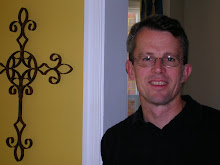Living on Trinity Drive -- FPC sermon excerpt
In my hometown of Bowie, Maryland, the Jewish synagogue had a very unfortunate address. Instead of being located on
Trinity Drive: A street that makes you think of God as Father, Son, and Holy Spirit.
The same awkwardness would be created by the placement of a Roman Catholic Church on “John Calvin Avenue,” or a Presbyterian Church on “Mohammed Lane.” While these names are important to particular faiths, they are not equally revered by all. Muslims are particularly devoted to Mohammed, Presbyterians are indebted to Calvin, and it is Christians — rather than Jews — who see God as a Trinity.
In Bowie, the name problem was eventually solved by a change of address. The synagogue is still located on
The Trinity is a uniquely Christian understanding of God. We depict the Trinity in the three interlocking circles of our FPC logo, on the cover of our worship bulletin. We sing about it in the hymn “Holy, holy, holy, Lord God Almighty … God in three persons, Blessed Trinity.” We affirm it in the Apostles’ Creed: “I believe in God the Father Almighty, maker of heaven and earth, and in Jesus Christ his only Son our Lord; who was conceived by the Holy Ghost.”
We confess our faith in the Trinity every time we baptize a person in the name of the Father, and of the Son, and of the Holy Spirit. The Trinity is central to our understanding of who God is, and even very young Christians know who the three persons of the Trinity are. When my daughter Sadie was six years old, I came across her pretending to baptize her dolls in the name of the Father, Son, and Holy Spirit.
Since we know who our God in three persons is, it is important to take a look at what this God in three persons does. Just as God exists as Father, Son, and Spirit, God acts as Creator, Redeemer, and Sustainer. God is experienced by us as the Lord who creates us and gives us life, redeems us from captivity to sin, and sustains us through the many challenges of life.
This view of God does not replace our understanding of God as Father, Son, and Holy Spirit; instead, it is a functional view of God that can deepen our devotion to the Trinity.
Kenneth Bailey, an author and lecturer in New Testament Studies, makes a strong connection between the Trinity and the visit of the Jewish leader Nicodemus to Jesus in today’s lesson from the third chapter of John. He points out that Nicodemus makes three speeches to which Jesus gives three replies. In addition, Jesus introduces each reply with the phrase “Amen, amen, I say to you,” which in our version of the Bible is translated “Very truly, I tell you.” Whenever this phrase appears, something of supreme importance is being said. The first amen statement provides critical information about God, the second tells of the Spirit, and the third illuminates the person of Jesus.


0 Comments:
Post a Comment
<< Home